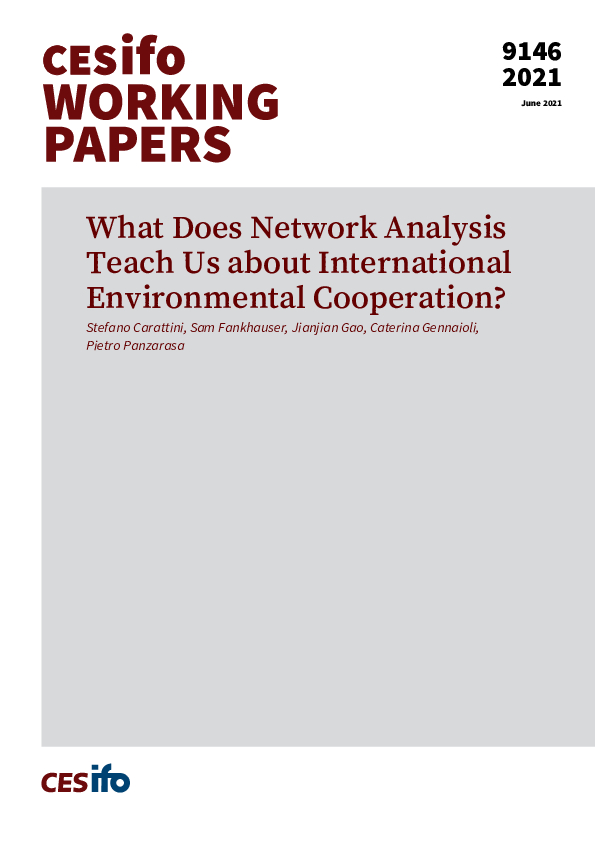What Does Network Analysis Teach Us about International Environmental Cooperation?
CESifo, Munich, 2021
CESifo Working Paper No. 9146

Over the past 70 years, the number of international environmental agreements (IEAs) has increased substantially, highlighting their prominent role in environmental governance. This paper applies the toolkit of network analysis to identify the network properties of international environmental cooperation based on 546 IEAs signed between 1948 and 2015. We identify four stylised facts that offer topological corroboration for some key themes in the IEA literature. First, we find that a statistically significant cooperation network did not emerge until the early 1970, but since then the network has grown continuously in strength, resulting in higher connectivity and intensity of cooperation between signatory countries. Second, over time the network has become closer, denser and more cohesive, allowing more effective policy coordination and knowledge diffusion. Third, the network, while global, has a noticeable European imprint: initially the United Kingdom and more recently France and Germany have been the most strategic players to broker environmental cooperation. Fourth, international environmental coordination started with the management of fisheries and the sea, but is now most intense on waste and hazardous substances. The network of air and atmosphere treaties is weaker on a number of metrics and lacks the hierarchical structure found in other networks. It is the only network whose topological properties are shaped significantly by UN-sponsored treaties.
Public Choice
Resources and Environment